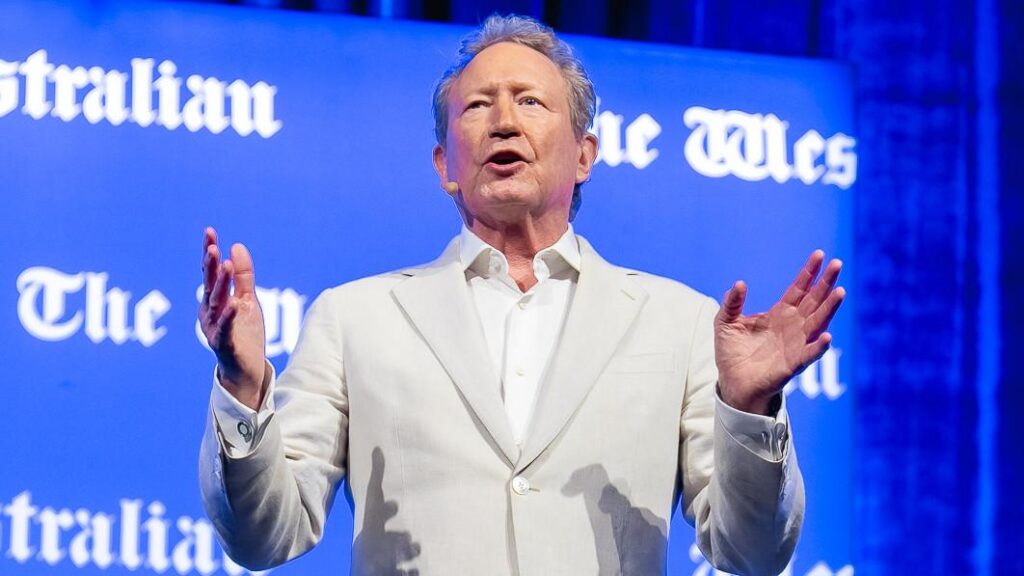Andrew Forrest’s Fortescue has made Australian corporate history by securing a Chinese-backed $US2 billion ($3.1b) loan to help bankroll ambitious decarbonisation efforts as the miner beats a retreat from its much-hyped green energy dreams.
The Pilbara iron ore major on Friday revealed the success of the Renminbi-denominated syndicated term loan facility with participation from Chinese, Australian and international lenders.
Mr Forrest also used the announcement to take a thinly-veiled swipe at US president Donald Trump’s administration and its decision to rein in green energy investment.
Fortescue said the loan was the first of its kind by an Australian corporate, calling it a “landmark” transaction that reflected “the depth of Fortescue’s long-standing relationships in China”.
The massive cash injection will support general corporate costs and moves to reduce the reliance on fossil fuels, including partnerships with Chinese suppliers and technology leaders.
“This isn’t just a financial transaction. It’s a signal of what is possible when partners are aligned in ambition,” Mr Forrest said.
“As the United States steps back from investing in what will be the world’s greatest industry, China and Fortescue are advancing the green technology needed to lead the global green industrial revolution.
“China continues to lead the world in industrial scale and innovation. Fortescue shares that ambition and drive. This landmark RMB financing strengthens our long-standing partnerships with Chinese institutions and opens new frontiers for collaboration.”
Fortescue in February warned the re-election of Mr Trump jeopardised its $US550 million green hydrogen project in the western US state of Arizona.
It had been earmarked for generous grants under the Biden administration.
But releasing its fourth-quarter results late last month, Fortescue’s freshly-appointed energy boss Gus Pichot said a shift in policy priorities away from green energy “has changed the situation in the US”.
The Arizona hydrogen project, along with the PEM50 electrolyser manufacturing plant in Gladstone — two of Fortescue most advance green energy projects — have now been scrapped and the miner expects to take a charge of $227m on its books.
Investors have become increasingly concerned over the past few years about Mr Forrest’s moves to pivot the miner away from iron ore to the production of green hydrogen. But so far plans to develop large-scale manufacturing hubs around the world in partnership with several countries have failed to eventuate.
It is also focusing on establishing a green iron industry in Australia, and is spending $75m on a pilot plant at its Christmas Creek mine to turn ore into steel using ‘green hydrogen’. Green hydrogen is produced by the electrolysis of water via renewable energy sources.
Fortescue group chief financial officer Apple Paget said the $US2b loan deepens the miner’s engagement with existing financial partners and further expands its banking syndicate to institutions with Renminbi lending capabilities.
“The exceptional demand through the syndication process is recognition of Fortescue’s strong credit profile, track record for operating excellence and disciplined capital allocation,” Mr Paget said.
“It marks another milestone in execution of our capital management strategy, diversifying funding sources, enhancing flexibility and lowering our cost of capital, including achieving Fortescue’s lowest ever cost of debt. It reinforces our position as responsible custodians of capital.”
The loan will have a fixed annual interest rate of 3.8 per cent.
https://thewest.com.au/business/mining/andrew-forrests-fortescue-heralds-landmark-us2b-renminbi-loan-to-advance-decarbonisation-efforts-c-19616552


